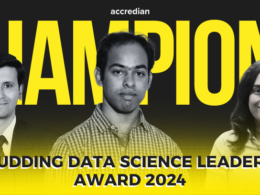We are all familiar with Microsoft and how it has been a part of everyday life. Microsoft has been serving its customers day and night with their various products and services and to maintain this huge data set, they need a good team of Data Scientists.
Data Scientists have become a prime requirement for Microsoft, in order to work with their database. And with the introduction of Microsoft Azure, the need for data scientists has grown immensely.
What do Data Scientists do at Microsoft?
The role of a Data Scientist at Microsoft differs as per the team one joins.
- In some cases, the role may be centered around analytics while other duties may include heavy use of machine learning and artificial intelligence.
- A Data Scientist at Microsoft may be required to spot a business or technical problem and interpret it by applying their data science concepts.
- Data Scientists at Microsoft also have to collaborate with many engineers and program managers to deliver solutions.
- They may also have to discover sources of information, help the analysis and the engineering team to implement the required solutions.
How do I prepare for a Microsoft Data Science interview?
We are here to help you gain insight of the Data Scientist interview at Microsoft. Simply put, there are 3 rounds of interviews in total which include an initial screen, a technical screen and an on-site interview.
Microsoft Data Scientist Interview Rounds
Stage-1 Initial Screen
After you have applied for the job, you will receive a phone call from one of Microsoft’s hiring managers/recruiters. This screen usually lasts for less than an hour and consists of two parts.
The first part will focus on your experience level and where you fit in the company. Here, you will be asked questions on your background, resume, roles and projects handled in the past.
The second part will include a few technical questions. The questions will be mostly theoretical. Few questions on statistics and probability, machine learning theory and AI have been asked in the past.
Depending on the background of the recruiter or hiring manager, one may be exempted from the technical questions. But you should be prepared nevertheless.
Stage-2 Technical Screen
After you have cleared the initial screen, the hiring manager will schedule the next stage which will be a technical screen. This interview can also be telephonic or on a video call. It lasts between 45 minutes to an hour and is focused more on technical questions than the previous round.
As per previously noted trends, this stage consists of approximately three questions covering the topics of data science algorithms, SQL and fundamentals of probability and statistics.
Stage-3 On-site Interview
The on-site interview for the Data Scientist position at Microsoft is an all day event. At the on-site interview, the candidate will go through 5 loops of interviews with senior data scientists.
The topics that will be covered in the onsite loop are:
- Probability and statistics
- Modelling and machine learning systems
- Data manipulation
- Data structures and algorithms
- Leasing manager and behavioural interview
You may also be subjected to a 1 on 1 informal interview over lunch with a few of the interviewers to get a fair idea about the work environment, work ethics and about the team.
This round will dive deeper into the technical questions in order to understand your understanding of the concepts and the role applied for.
Pro Tip: You should be well prepared with subjects like data science, statistics, probability and machine algorithms.
You will be asked to give whiteboarding solutions like writing codes and functions in SQL and Python. Therefore make sure to brush up your coding skills as well.
Interviews at Microsoft have a lot of open-ended type questions where the solutions are open to interpretation as well. Questions are also based on data visualisation and presentation, which is different from other companies for similar positions.
20 top questions asked by the Microsoft interviewers
Here are some frequently asked questions at a Data Scientist interview:
EASY
- Find the maximum of subsequence in an integer list.
- Write a Python function that displays the first n Fibonacci numbers.
- Explain the Support Vector Machine (SVM).
- What is cross-validation?
INTERMEDIATE
- What’s a confusion matrix? How to explain it to a non-statistics person? What’s a false positive and false negative?
- How Random Forest, Lasso and Ridge Regression work? Explain the difference between lasso and ridge.
- Write a function to check whether a particular word is a palindrome or not.
- What is the ROC curve and the meaning of sensitivity, specificity, confusion matrix?
- What is a P-value? How would you explain p-value to a non-technical person on the team?
- Describe the steps for data wrangling and cleaning before applying machine learning algorithms.
- How to deal with unbalanced binary classification?
- How do you detect if a new observation is an outlier? What is the bias-variance trade-off?
- Merge k (in this case k=2) arrays and sort them.
HARD
- Why neural networks are working and why is it a booming field?
- Generate a fair coin from a biased one.
- Generate 7 integers with equal probability from a function which returns 1/0 with probability p and (1-p).
- Given a time series dataset, how will you predict future value?
- How to explain a deep learning model to customers?
- How can you compute an inverse matrix faster by playing with some computation tricks?
- How best to select a representative sample of search queries from 5 million?
So there you have it, a crack at the data scientist role interview at Microsoft.






1 comment